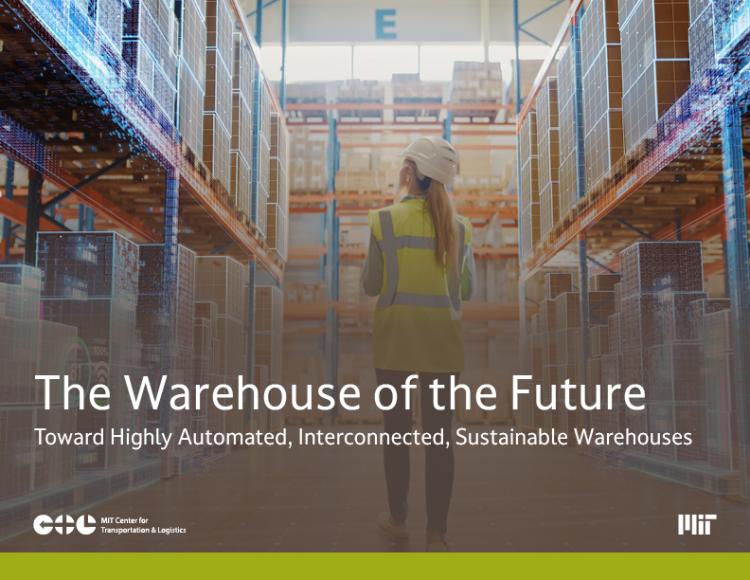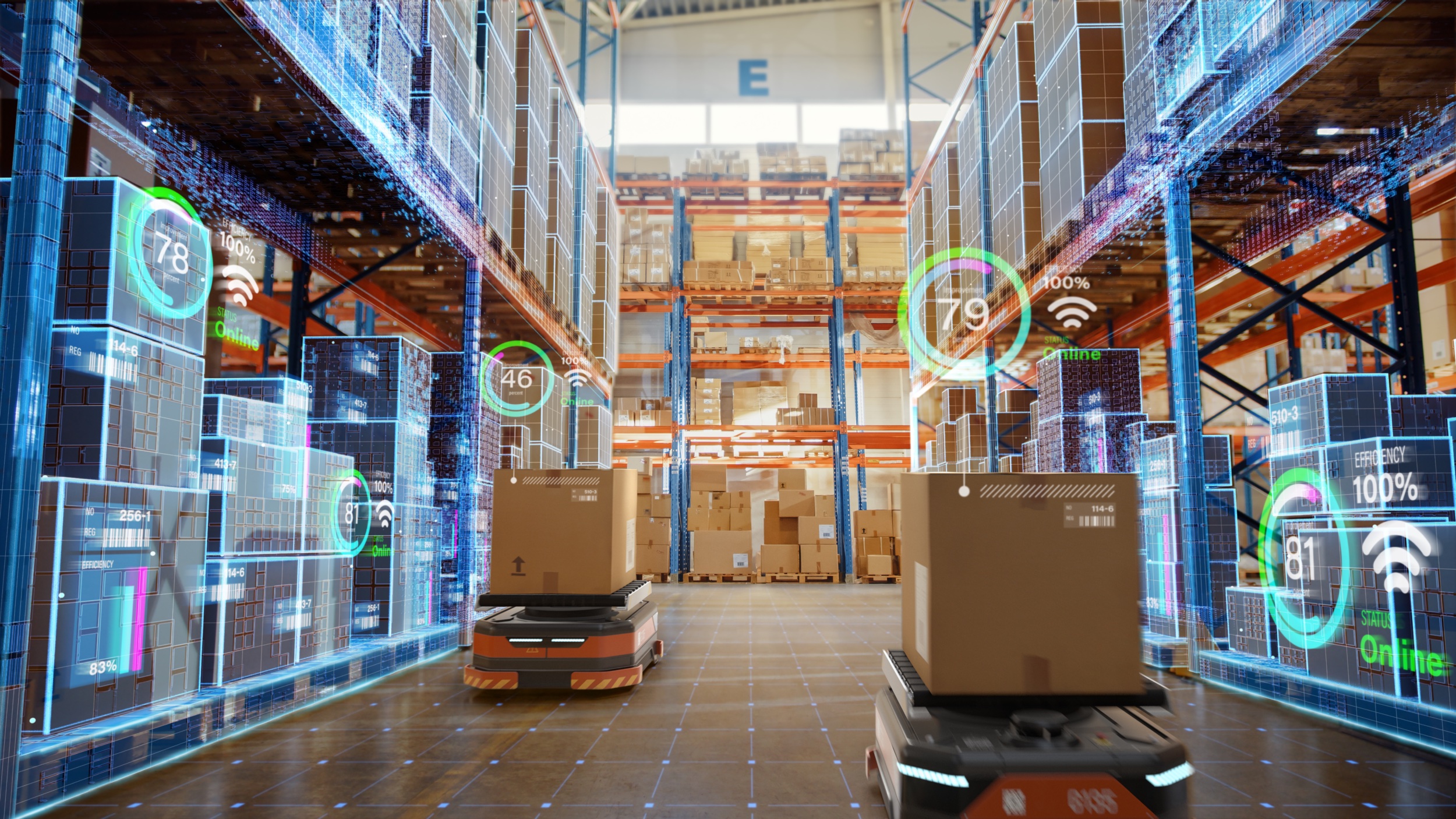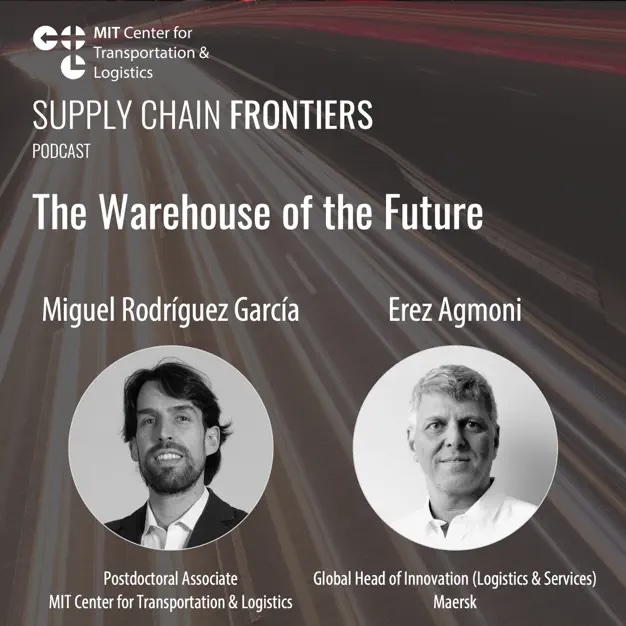The Warehouse of the Future Initiative
Reimagining how warehouses scale, respond, and recover in a world of constant change.
MIT’s Warehouse of the Future Initiative is a research-driven effort to understand and shape the next generation of highly automated, interconnected, and intelligent logistics systems. We explore why some warehouse technologies succeed while others fail, how decisions can be optimized in complex environments, and how to build operations that recover when complex systems break down. Through data analytics, behavioral insights, and risk analysis, we develop frameworks to help design smarter, more resilient warehouses—critical to the future of supply chains.
Current Research Focus Areas

Technology Evaluation
Why do some warehouse technologies succeed while others stall or fail?
We study the real drivers behind successful implementation—beyond ROI—by combining data analytics with behavioral insights and system-level thinking. Our goal: to create frameworks that guide smarter and more successful technology evaluation and implementation decisions in highly automated warehouses.

Smart Warehouses
What if we could understand the impact of every warehouse decision before it’s made?
We aim to develop advanced simulation and optimization models enhanced with agent-based AI to reflect the complexity of modern fulfillment centers—thousands of SKUs, space constraints, automation layers, and more. These environments will allow us to explore policies, stress-test layouts, and enable machine-supported decision-making.

Technology Risks
How can we build the most resilient warehouses? Even if technologies fail, could we find a way to keep our operations running?
We investigate the hidden risks of interconnected systems—from software breakdowns to cyberattacks and power outages—and co-design strategies for prevention, detection, and recovery of logistics systems. Our mission is to help build warehouses that not only perform, but endure.
Research Highlights

Supply chains under (cyber) attack
Cyberattacks are crippling supply chains and exposing hidden vulnerabilities in the very technologies meant to drive efficiency. As cloud platforms, robotics, and connected systems expand, companies must treat cybersecurity as a core supply chain function, building redundancy, resilience, and cross-functional defenses to withstand the next inevitable strike.
This article was published here in the November 2025 issue of Supply Chain Management Review. A free PDF version of the article is available here.

The Warehouse of the Future: Toward Highly Automated, Interconnected, Sustainable Warehouses
The warehouse of the future represents a paradigm shift in warehouse design and operation. It is the industry’s response to the burgeoning growth of e-commerce, worldwide supply chain disruptions including warehouse labor shortages in developed markets, and increasing awareness of the significant volume of greenhouse gas (GHG) emissions emitted by warehouses.
In this white paper, we detail the concept and fundamental characteristics of the warehouse of the future: a shift toward a highly automated, interconnected system that leverages automation and digitalization to enhance precision, flexibility, and efficiency to adapt to changing market and supply chain trends, while integrating environmental sustainability alongside technological innovation. This concept signifies a forward-thinking model that aligns operational efficiency with a sustainable approach to warehousing, that is pivotal to the evolution of contemporary supply chains.

Identifying The Key Vulnerabilities In The Warehouses Of The Future
The rapid adoption of automation and digital technologies in warehousing introduces new risks that could disrupt operations and impact the broader supply chain. Drawing from extensive state-of-the-art research and insights from over 40 warehousing and technology experts, our study identifies five major disruptions that can affect modern, highly automated warehouses: cyberattacks, power and network outages, technology sabotage, technology failures, and accidents caused by human-machine interaction.
Read more:

Six Steps on the Journey to Environmentally Compliant Warehouses
Before decision-makers consider the many options they have for reducing the environmental impact of warehouses, they must look at the benefits of retrofitting existing facilities versus building new ones. Retrofitting involves additional costs but requires fewer materials and resources that can contribute to carbon emissions over their life cycles.
As warehouse automation increases energy demand, it is important to choose technologies and systems designs that help companies meet their environmental goals.
Having decided on the broad approach to green warehousing, practitioners can focus on specific operational areas to accomplish goals such as reducing a facility’s carbon footprint by implementing energy-efficient practices.

The Warehouse of the Future for CPG Companies
In collaboration with one of the largest Consumer Packaged Goods (CPG) companies, we helped design the roadmap for their Warehouse of the Future (WoF). This company specializes in manufacturing and distributing various packaged food products, including snacks, beverages, cheese, convenient meals, and other grocery items. Our research focused on aligning their Supply Chain and Digital Strategy visions with their warehouse operations. We worked closely with internal stakeholders, conducted a series of in-person workshops, and delivered a detailed roadmap for their WoF with actionable plans.

Transforming Warehouses Towards a Sustainable Future
The warehousing industry is a significant source of greenhouse gas (GHG) emissions contributing to the climate change that is being witnessed by the world in the past few years. In response to that, our capstone sponsor Maersk tasked us with identifying actionable steps to reduce GHG emissions at the warehouse level. We evaluated 13 technologies to reduce GHG emissions and conducted an in-depth review of seven of them. Our methodology assessed the environmental and economic impacts of implementing these technologies. The project was concluded with a framework for evaluating different sustainable solutions in an integrated way.



